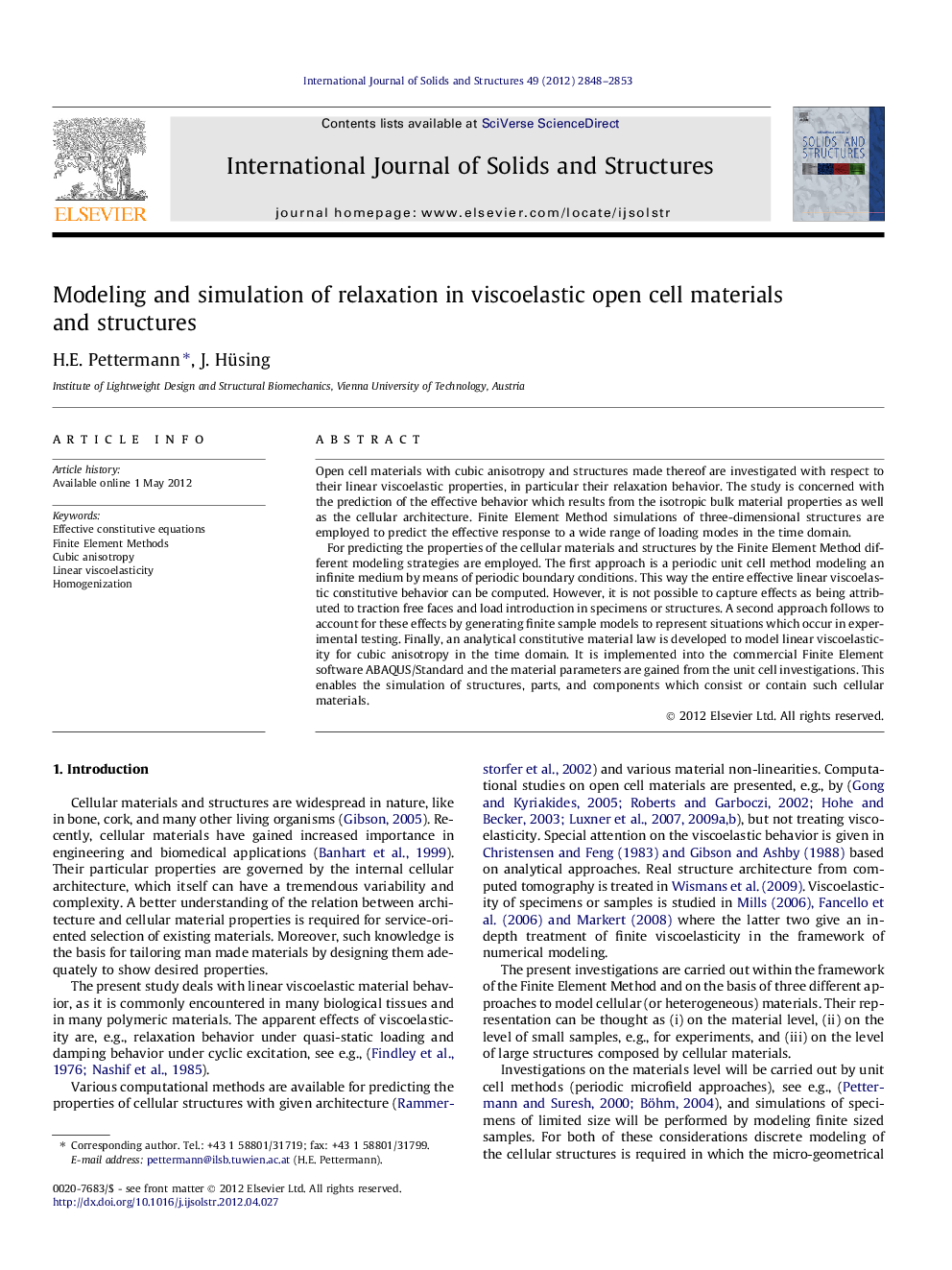| Article ID | Journal | Published Year | Pages | File Type |
|---|---|---|---|---|
| 6749504 | International Journal of Solids and Structures | 2012 | 6 Pages |
Abstract
For predicting the properties of the cellular materials and structures by the Finite Element Method different modeling strategies are employed. The first approach is a periodic unit cell method modeling an infinite medium by means of periodic boundary conditions. This way the entire effective linear viscoelastic constitutive behavior can be computed. However, it is not possible to capture effects as being attributed to traction free faces and load introduction in specimens or structures. A second approach follows to account for these effects by generating finite sample models to represent situations which occur in experimental testing. Finally, an analytical constitutive material law is developed to model linear viscoelasticity for cubic anisotropy in the time domain. It is implemented into the commercial Finite Element software ABAQUS/Standard and the material parameters are gained from the unit cell investigations. This enables the simulation of structures, parts, and components which consist or contain such cellular materials.
Related Topics
Physical Sciences and Engineering
Engineering
Civil and Structural Engineering
Authors
H.E. Pettermann, J. Hüsing,
